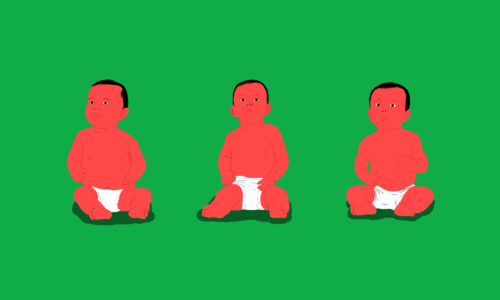China’s desperate struggle for more babies
China is about to enter an era of negative population growth. With the high costs of parenting and well-established social norms for small families, the government seems ill equipped to turn around the inexorable demographic tide of a decreasing and aging population.

Yesterday, Qiushi 求是, the Chinese Communist Party’s leading theoretical journal, published an article entitled “Writing a new chapter of population work for a new age,” attributed to the Party Work Group of the National Health Commission. The article clearly describes China’s fundamental dilemma: Low fertility rates have become “the most important risk factor” affecting the development of the Chinese population, which is facing “profound and complex changes.”
According to the article, the 14th Five-Year Plan period (2021-2025) is a crucial (and inauspicious) turning point where the government will have to deal with these problems and their economic fallout:
- Large drop in the birth rate: The total number of births in 2021 was 10.62 million, a decrease of 1.38 million compared with in 2020. From 2017 to 2021, the number of births in several places in China with large populations like Henan, Shandong, Hunan, Jiangxi, Shandong, Anhui, and other provinces and regions declined by more than 40%.
- Decline in childbearing willingness: According to National Health Commission data, the average ratio of women of childbearing age intending to bear children decreased from 1.73 in 2019 to 1.64 in 2021. Among women born after 1990 and 2000, the averages are even lower at 1.54 and 1.48, respectively.
- Rapidly aging population: By around 2035, over 30% of the population will be over 60 years of age.
- Miniaturization of families: In 2020, the average family size decreased to 2.62 people, a decrease of 0.48 people compared with in 2010.
The result is that a population shock is about to descend on China. Non-Chinese sources confirm this: According to the United Nations’ World Population Prospects 2022, China will experience negative population growth for the first time in 2023, and it will become only the second country (after Japan, a highly pessimistic precedent for China) with a population of 100 million or more to experience negative population growth.
Yet China’s response to this demographic time bomb has been slow, limited, and uncoordinated.
Long-term and arduous efforts, in vain?
The Qiushi article states that the crucial task of optimizing China’s fertility policy will be a very demanding task requiring “long-term and arduous efforts.” In June 2021, the State Council issued the Decision on Optimizing the Birth Policy that implemented the three-child policy, and called for supporting measures to incentivize young couples to have more children.
The Qiushi article says that the most important tasks right now are to improve birth support policies, and infant and child care services:
- Since the Decision last year, various local governments have introduced measures to encourage childbirth, including an extension of maternity leave up to 60 days, childcare allowances and subsidies, and improved public rental housing and other housing policies.
- The National Health Commission also encourages the accelerated development of an inclusive and professional childcare service system, with a planned target of 4.5 children in childcare services per 1,000 population by 2025.
Yet in order to actually arrest China’s declining birth rates, the overbearing challenge for China is to reduce the cost of parenting, to increase female employment, to reduce work discrimination (to ensure women can return to work after maternity leave), and to substantially increase family support policies in terms of taxation, housing, and social security. The high cost of childbirth and parenting is causing young people to generally marry later, have children later, and have fewer children (if they have any at all).
As of June this year, a total of only 13 Chinese provinces (out of 23 provinces, five autonomous regions, and four centrally administered municipalities) have issued population development policies on reducing the cost of childbirth, parenting and education, and improving childcare services and extending maternity leave and subsidies. But many women are choosing not to make use of the extended maternity leave available to them, due to complications with their employers and the risk of reduced promotion. Childcare subsidies, family loans, and other support measures are still in the early stage of implementation, moreover, and in many cases are simply not yet available.
There is thus a glaring lack of a coordinated, national, and effective strategy for increasing the fertility rate. According to the Qiushi article, China needs to create a new culture of marriage and parenting in which couples share childcare responsibilities, with “Chinese stories of beautiful love, harmonious family, and happy life in a new era.” But this idyllic image seems completely removed from reality: As one expert has pointed out, the predominance of the digital society has reduced face-to-face interpersonal communication, decreasing the scope for people to fall in love and eventually have children, not to mention their high cost. And after four decades of one-child families, the concept of multiple children is foreign to most Chinese of childbearing age.
The economic slowdown to come
It is significant that Qiushi, widely considered to be an authoritative representative of Communist Party and central government thinking, has issued such a grave warning on the consequences of population decline and the need for action.
This underlines the reality of China’s demographic time bomb and the economic slowdown that is inevitable unless drastic measures are taken.






